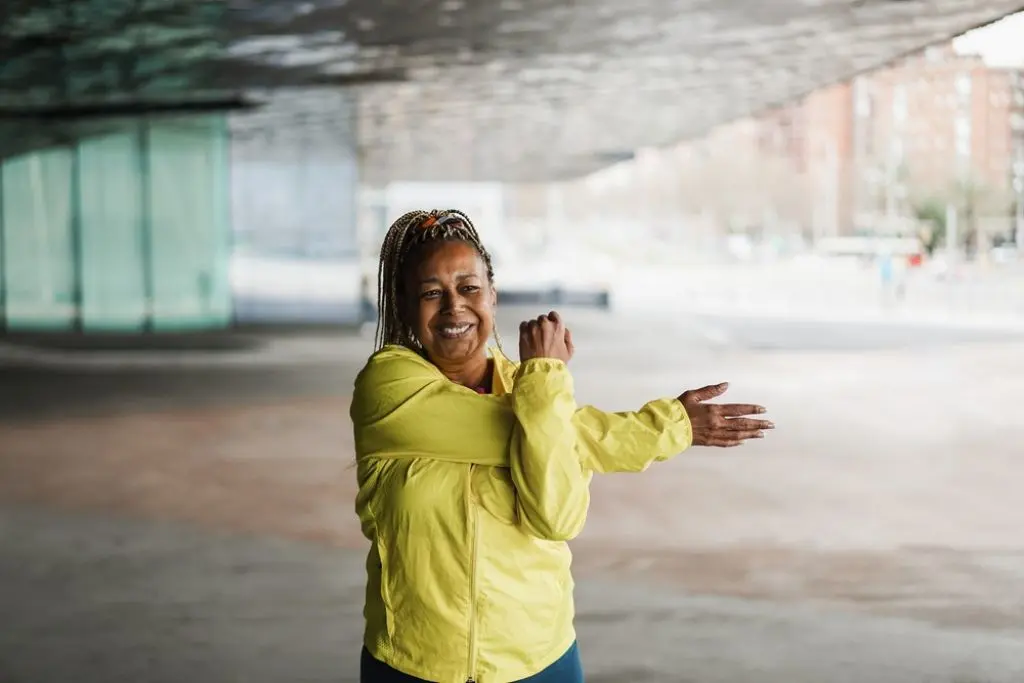What Is Sarcopenia? How To Prevent Age-Related Muscle Loss

February 27, 2023

As much as we love to recognise what a privilege it is to grow older and wiser each year, there are some things about ageing that most of us aren’t particularly looking forward to. Whether it be menopause or natural changes to your metabolism, skin and hair, to an increased risk of health conditions and diseases, getting older can come with a unique set of challenges. You may even find you need to change how you approach exercise!
One challenge that can have a significant impact on your fitness and daily life is the natural decline in your muscle mass, and something you definitely want to avoid is sarcopenia. Sarco-what? Let’s break down what this condition is, its symptoms and causes, and what you can do to treat and prevent it.
What is sarcopenia?
While gradual age-related muscle loss is to be expected, sarcopenia refers to a severe level of muscle loss much higher than what is considered normal. It’s a condition that can not only lead to weakness and an overall loss of strength and stamina, but also negatively affect your balance, speed, metabolism, insulin resistance, posture and ability to perform everyday activities. This can then create a vicious cycle where your reduced ability to move well leads to an even faster rate of muscle loss.
Because a severe decline in muscle mass can increase your risk of falls or create difficulty moving as you age, Mayo Clinic says it can result in a loss of independence, a need for full-time care, disability and a higher rate of mortality. 2020 research also highlighted that sarcopenia is a major public health problem with high prevalence in many countries.

What causes sarcopenia?
According to research, multiple factors can play a role in the development of sarcopenia, such as ageing, a sedentary lifestyle, poor nutrition, age-associated hormone changes, sex steroids, inflammation and chronic illnesses such as cancer, kidney disease, diabetes and heart failure.
Cleveland Clinic says the condition most commonly affects people aged 60 and older and is thought to be primarily due to the biological processes of ageing. Rates are thought to be between 5-13% in populations aged 60 and above, and 11-50% in populations aged 80 and above.
However, the Australian Institute for Musculoskeletal Science also points out that it’s just older, inactive people who may suffer from this condition. Sarcopenia can also affect younger populations who live a sedentary lifestyle or have conditions such as arthritis, those who are considered obese or malnourished, and can also present in older people who are very active.
While a diet low in calories and protein can increase your risk, so can overnutrition. Eating more than your body needs can result in sarcopenic obesity where a person has low levels of muscle mass alongside high levels of fat mass or adiposity. In cases of sarcopenic obesity, a person’s risk of health complications are greater than with obesity or sarcopenia alone.
How do you diagnose sarcopenia?
Many people don’t actually receive a diagnosis or proper treatment for sarcopenia and there is no single diagnosis test. According to Cleveland Clinic, your healthcare professional may ask questions about your symptoms and recommend multiple tests to make an assessment on whether you have sarcopenia and how severe it is.
Common symptoms include:
Muscle weakness
Poor endurance
Poor balance
Difficulty climbing stairs
Decreased muscle size
Physical tests may include a handgrip test, a walking speed test, or testing how many times you can sit and stand from a chair without using your hands for support. Imaging tests can also be used to measure your body composition and levels of bone, muscle mass and fat mass.

Sarcopenia treatment: what is best?
If you have sarcopenia, your healthcare provider will recommend the best treatment options for you based on your condition and lifestyle. Sarcopenia treatment generally involves lifestyle changes around nutrition and exercise with a focus on resistance training to improve your body composition, strength and hormone levels, reverse or reduce your rate of muscle loss, and improve your ease of daily movement.
Nutrition recommendations usually involve an increase of protein and overall calories if you’re not eating enough. Without making these recommended changes, your muscles will continue to weaken and the effects will become more apparent.
Research has highlighted that in clinical intervention studies to date involving nutrition changes and resistance training, even the oldest and most frail nursing home residents have demonstrated a significant improvement in overall function.
Using hormone supplements as a way to increase muscle mass is another area undergoing study, but Cleveland Clinic says there aren’t currently any FDA-approved medications.
Can you prevent sarcopenia?
Yes you can prevent sarcopenia, in very similar ways to how you would treat it! The best ways to prevent sarcopenia are to lead an active lifestyle, incorporate regular strength training in your routine, and eat adequate amounts of protein to maintain muscle mass and support muscle growth.
A scientific review from 2021 aimed to establish the best recommendations to prevent sarcopenia and concluded that optimal nutrition strategies for older adults should focus on eating 1.6-1.8 grams of protein per kilogram of bodyweight, with your protein intake evenly distributed across about three main meals each day.
If hitting this protein target is difficult, protein supplements can be a helpful way to maintain muscle mass. Consuming enough calories each day is also important for older adults, as adequate energy intake is fundamental if you want to preserve muscle mass over time.
When it comes to exercise, research has shown aerobic exercise and resistance training are both effective methods to reduce your risk of developing sarcopenia. As the saying goes, “use it or lose it”! The authors of the study explain that aerobic exercise might stimulate long-term synthesis of skeletal muscle DNA, and resistance training is associated with greater muscle fibre area and cell content. A bit of both and you’ll have the best of both worlds!
The Australian Institute for Musculoskeletal Science recommends performing strength training exercises a minimum of two days per week to maintain muscle size, strength, and tone, as well as strengthening your bones, ligaments and tendons. You can use weights, resistance bands, machines or perform bodyweight exercises!
A regular workout schedule isn’t just about feeling fit, strong, happy and confident, it’s also about protecting your long-term health and setting you up to continue moving well as you grow older.
Thinking you probably need more strength training in your routine? The Sweat app has plenty of different program options perfect for whatever equipment you have, the kind of schedule you’re juggling, or the training style you prefer.

A more empowered you starts with Sweat, and our editorial team is here to bring you the latest fitness tips, trainer recommendations, wellbeing news, nutritional advice, nourishing recipes and free workouts.
* Disclaimer: This blog post is not intended to replace the advice of a medical professional. The above information should not be used to diagnose, treat, or prevent any disease or medical condition. Please consult your doctor before making any changes to your diet, sleep methods, daily activity, or fitness routine. Sweat assumes no responsibility for any personal injury or damage sustained by any recommendations, opinions, or advice given in this article.
Fitness